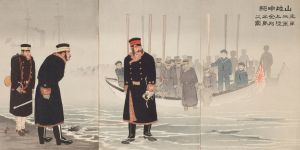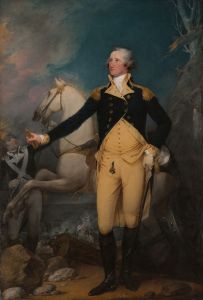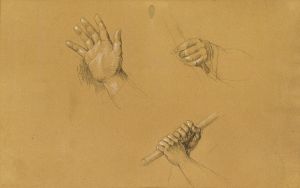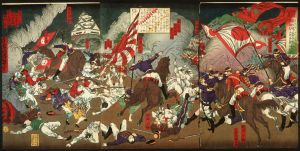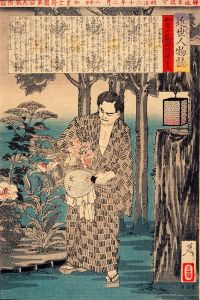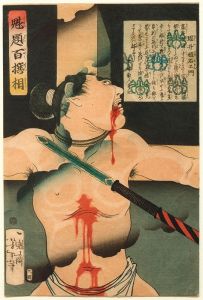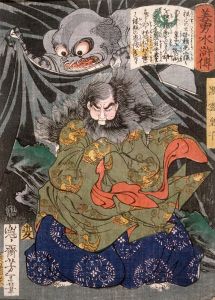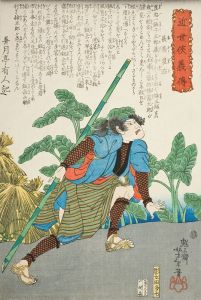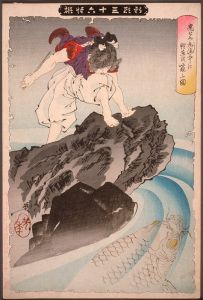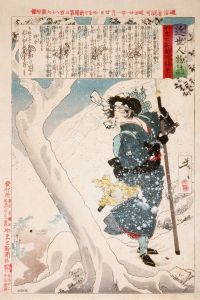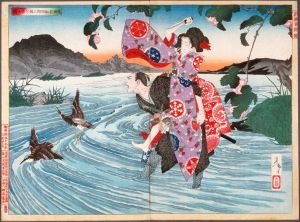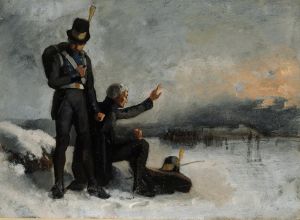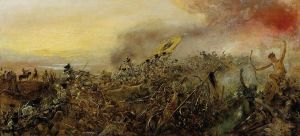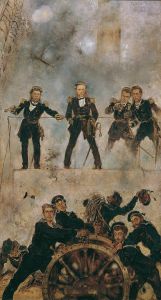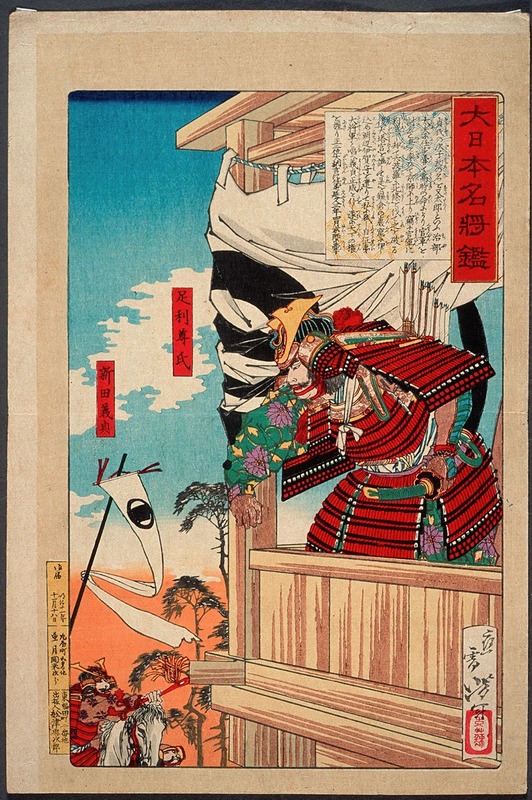
Ashikaga Takauji and Nitta Yoshisada
A hand-painted replica of Tsukioka Yoshitoshi’s masterpiece Ashikaga Takauji and Nitta Yoshisada, meticulously crafted by professional artists to capture the true essence of the original. Each piece is created with museum-quality canvas and rare mineral pigments, carefully painted by experienced artists with delicate brushstrokes and rich, layered colors to perfectly recreate the texture of the original artwork. Unlike machine-printed reproductions, this hand-painted version brings the painting to life, infused with the artist’s emotions and skill in every stroke. Whether for personal collection or home decoration, it instantly elevates the artistic atmosphere of any space.
Tsukioka Yoshitoshi (1839–1892) was a renowned Japanese artist known for his work in ukiyo-e, a genre of woodblock prints and paintings that flourished in Japan from the 17th through 19th centuries. Yoshitoshi is often celebrated for his innovative approach to traditional subjects and his ability to capture the complexities of human emotion and historical narratives. One of his notable works is the depiction of Ashikaga Takauji and Nitta Yoshisada, two prominent figures from Japanese history.
Ashikaga Takauji (1305–1358) was the founder and first shogun of the Ashikaga shogunate, which ruled Japan from 1336 to 1573. He played a crucial role in the tumultuous period of Japanese history known as the Nanboku-chō period, which was marked by the conflict between the Northern and Southern Courts. Takauji initially supported the Kamakura shogunate but later turned against it, aligning himself with Emperor Go-Daigo in the Kenmu Restoration. However, due to political disagreements and power struggles, Takauji eventually established his own shogunate, marking the beginning of the Muromachi period.
Nitta Yoshisada (1301–1338) was a samurai and a loyal supporter of Emperor Go-Daigo. He is best known for his role in the overthrow of the Kamakura shogunate. Yoshisada's most famous military achievement was the Siege of Kamakura in 1333, where he led the imperial forces to victory, effectively ending the Kamakura shogunate's rule. Despite his initial successes, Yoshisada's fortunes waned as he continued to support the Southern Court against the rising power of Ashikaga Takauji.
The relationship between Ashikaga Takauji and Nitta Yoshisada is emblematic of the complex and often shifting allegiances during this period of Japanese history. Initially allies in the struggle against the Kamakura shogunate, their paths diverged as Takauji sought to consolidate his power, leading to a bitter rivalry. Yoshisada remained a staunch supporter of the Southern Court, opposing Takauji's establishment of the Ashikaga shogunate. This conflict ultimately led to Yoshisada's death in battle in 1338.
Yoshitoshi's depiction of Ashikaga Takauji and Nitta Yoshisada captures the tension and drama of this historical rivalry. His work often reflects a deep understanding of the historical context and the personal dynamics between the figures he portrays. Yoshitoshi's prints are characterized by their dynamic composition, attention to detail, and the ability to convey the emotional intensity of the scenes depicted.
In creating his artwork, Yoshitoshi drew upon the rich tradition of Japanese woodblock printing while also incorporating his unique style and perspective. His portrayal of historical figures like Takauji and Yoshisada not only serves as a visual record of Japan's past but also offers insight into the cultural and political narratives of the time. Through his art, Yoshitoshi has left a lasting legacy that continues to be appreciated for its artistic merit and historical significance.





